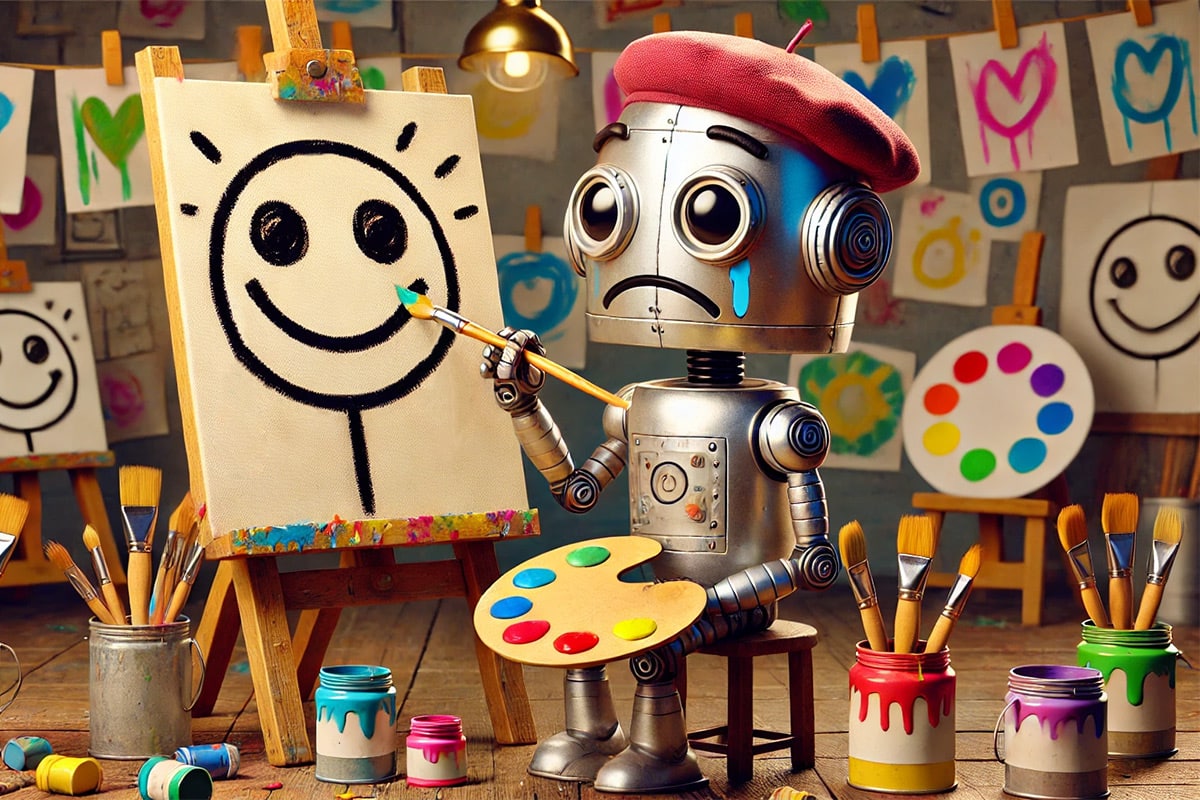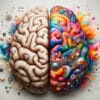”AI is coming for your job!
Cue the dramatic music and collective gasps. Sometimes it feels like everywhere you look, headlines, TikTok hot takes—even your own late-night anxiety spirals—seem to echo the same ominous message: the machines are coming to replace us. And for creatives? Writers, designers, artists—it’s apparently your turn to panic.
But let’s get real for a second. Is AI impressive? Absolutely. Is it a total game-changer? No doubt. But is it coming for your creative gig? Pump the brakes, Speed Racer.
Think of AI as that overly eager intern who shows up to meetings with decent ideas but still needs a seasoned pro to turn them into gold. It’s brilliant at grunt work—crunching numbers, generating first drafts, and even pulling off solid imitations. But the spark? The depth? The weird, brilliant, chaotic magic that makes creativity truly…creative? That still requires a human touch.
So before you start dusting off your résumé for a career in server maintenance, take a breath. The future is more about humans and AI teaming up, breaking creative barriers, and complementing each other’s strengths.
But not all creative jobs are feeling the AI heat equally. Let’s break down who’s in the crosshairs.
Graphic designers: Canva’s coming for you (kind of… not really)
If you’ve played around with stuff like Canva AI, Firefly, or Designify, you know they’re pretty slick. Need a logo? Done. A social media graphic? Easy. But here’s the thing: AI-generated graphics? Sure, they might look cute, but can they nail a client’s vibe? Translating something like “edgy but approachable” into a cohesive design takes more than algorithms—it takes context, creativity, and emotional insight that AI just doesn’t understand.
Quick example: bad kerning. AI doesn’t even know what kerning is, let alone why its absence makes you cry inside. Sure, these tools are great for cranking out templates and filling gaps, but they don’t have the finesse to balance bold with delicate—or to break design rules intentionally for emotional effect.
At the end of the day, AI is a tool—powerful, yes, but still a sidekick.
Visual artists: MidJourney’s mid (no offense)
Generative art tools like MidJourney, DALL·E, and Artbreeder are undeniably cool. They can whip up visuals that stop you mid-scroll, and they’re great at mimicking established styles. But that’s the rub: mimicry isn’t mastery, and AI doesn’t create—it remixes. (Of course, there are ethical questions about where AI gets its inspiration, but that’s a topic for another day.)
Sure, AI can produce something that looks superficially impressive, but humans make art that feels. Ask yourself, have you ever seen AI art that made you cry? Or gave you goosebumps? Probably not, because AI-generated art lacks… well, humanity. And, it turns out, most people can detect that.
Writers: AI’s got wordplay, but no soul
ChatGPT can spit out ad copy, blog posts, and even halfway decent rap lyrics faster than you can refill your coffee cup. Impressive, right? But it doesn’t have childhood memories to draw from, or a quirky sense of humor that makes people chuckle. It might churn out grammatically correct sentences all day, but can it capture a client’s brand voice? Not quite.
And let’s talk about meaning and intent for a second. Ever notice how AI sometimes sounds like it opened a thesaurus and forgot what it was trying to say? It knows the words, but it doesn’t understand how they should land. It’s a language model, assembling words in an algorithm-approved order. And while it might be fast, efficient, and technically proficient, it struggles to pass the vibe check.
Marketing strategists: AI thinks it’s smart
AI-powered marketing tools like HubSpot AI, Adobe Firefly, and Figma’s Magician are making waves. They can crunch data, predict trends, and even help craft pitch-perfect mockups in minutes. Honestly, it’s the kind of assistant that makes you look like a genius in meetings.
But let’s be clear: when it comes to bold ideas, that’s still your job. AI excels at analysis and optimization, but it can’t dream up out-of-the-box concepts or rally a team around a visionary pitch. It’s not going to come up with the next “Share a Coke” campaign or nail the vibe of a guerrilla marketing stunt. AI’s idea generation is like throwing darts at a giant wall—it’s got range, sure, but it doesn’t know which ones will actually stick.
Why Humans Still Rule the Creative Game
Now, I don’t want to sell you a bad bill of goods. In truth, AI will come for some of your jobs—in fact, I’m sure it already has. Small projects, simple graphics, keyword-optimized content for blogs and digital advertising… these are the kinds of rote, robotic tasks that AI excels at (and, frankly, I think most of us are okay with this).
But in the realm of true creative, AI struggles, and likely will for a while. Here’s why.
We have feelings (and that’s a flex)
AI can mimic empathy, but it doesn’t feel anything. It’s the difference between reading “I’m sorry for your loss” on a form letter and hearing it from a friend who truly understands your grief. People connect with stories that make them laugh, cry, or shout—things born from real human experience and connection, not lines of code.
We’re wildcards
AI loves formulas and rules—it’s literally built on them. Humans? We bend them, break them, and toss them out entirely. The next big trend, the thing no one saw coming, won’t be AI’s doing. Just look at the current obsession with gradients—neon fever dreams splashed across everything from app interfaces to ad campaigns. That’s all us. Creativity thrives on novelty and unpredictability, and AI’s still coloring inside the lines.
AI doesn’t brainstorm over coffee, crack jokes, or passionately argue about why Helvetica is so boring. The best ideas come from the chaos of human collaboration, not pre-programmed algorithms. The magic is in the mess, and that’s where we shine.
The Future Is in Partnering with AI
Human + Machine = Creative Power Couple
Quick drafts, mockups, data insights? AI the sidekick to the rescue. Resizing 200 banner ads? Generating endless variations of the same visual? AI tools shine at tackling repetitive, time-sucking tasks that don’t require your creative genius.
Think of AI as the Watson to your Sherlock, the Garfunkel to your Simon. It’s a partnership that frees you to ideate the next award-winning campaign, craft big ideas that make clients gasp, and put the “wow” in wow-factor. AI isn’t replacing you—it’s freeing you to do what you do best.
Conclusion: Don’t Worry, You’re Still Cooler Than AI
AI is cool, no doubt. It’s fast, efficient, and just creative enough to get the ball rolling. But humans? We’re cooler. We’ve got intuition, soul, and yes, bad puns—stuff AI hasn’t mastered (and may never).
So stop panicking and start partnering. AI isn’t here to steal your job (yet)—it’s here to make it easier. Those who embrace these tools, experiment with their potential, and figure out when to use them will own the future. This isn’t about surrendering creativity—it’s about evolving it. Work with AI and you’ll crush it. Everyone else? Well, the future doesn’t wait around.
Here’s the kicker: the outline for this post? AI helped, sure. But the wit, the insight, and the creative spark that got you to read all the way to the end? That’s all me, baby.
Written by Grant Miller—who proves that all you really need to write well is caffeine, sarcasm, and a healthy dose of existential dread.








